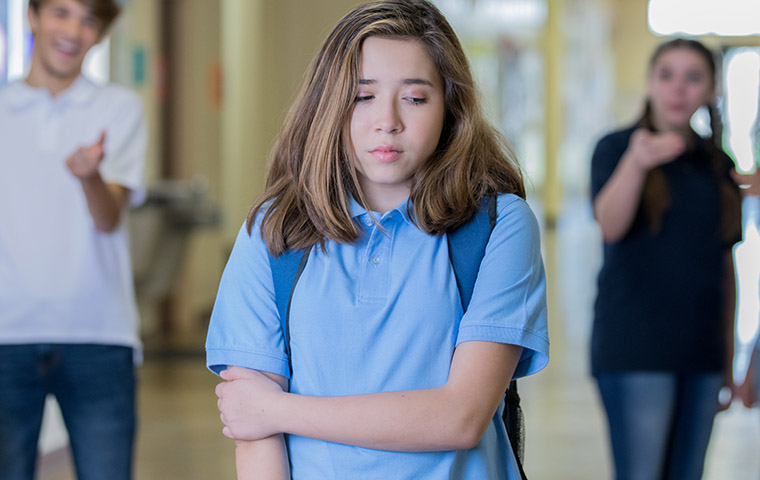When we think about peer pressure, we usually think of teenagers encouraging each other to experiment with drugs or alcohol. Many parents are surprised to learn that children begin to care what their peers think as young as age three or four. You might even notice a two-year-old copying the mischievous behavior of a friend or older sibling. Since it is normal for children to admire and enjoy being with their peers, peer pressure is a normal part of childhood. For parents, it's important to help children understand when they should listen to or follow their peers and teach them when to be independent.
You've probably heard the saying, “If your friends all jumped off a bridge, would you do it too?” In this article, I'll share some practical tools to help keep your child safely on the bridge, even when peer pressure is high.
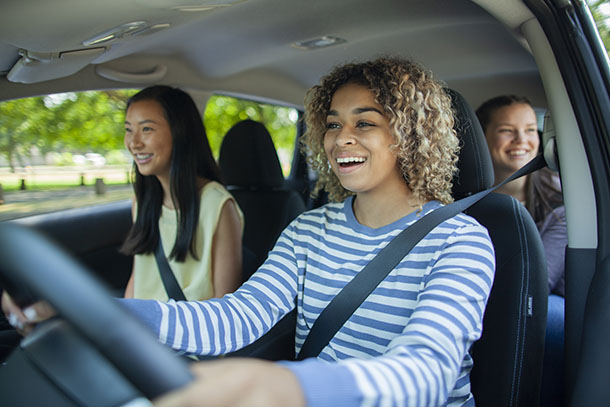
What is Peer Pressure?
What exactly is peer pressure? Peer pressure is when someone tries to get others to change their behavior, values, or beliefs in order to be accepted by others in a peer group . Typically, peer pressure means breaking the rules (or parents' expectations) in order to meet the expectations of peers. Often this involves participating in risky behavior. While younger kids may not participate in the type of risky behavior we often think about, negative peer pressure can show up in other ways. Helping a younger child address it early will help him (or her) better deal with peer pressure in his teen years.
Some behaviors that younger children may engage in as a result of peer pressure may include:
- Repeating a friend's behavior after he has already gotten in trouble for it.
- Pushing safety limits like jumping off a tall object.
- Breaking a rule on purpose to get a reaction.
- Any behavior that pushes the limits of safety or boundaries.
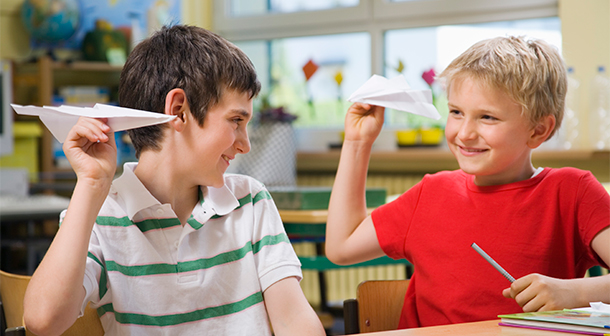
Examples of Peer Pressure in Children Ages 4–6
You'll notice that peer pressure becomes more frequently after your kids start school and have more interaction with kids their age. This is a time when children begin to notice their own skills and talents and compare them to others. Kids as young as age four notice their peers' skills and who “gets things right.” Their self-esteem may be affected when they see a friend pick something up quicker than they did, or they feel rejected by a peer. They can also begin to admire their peers. They start to feel the joys of positive interactions with each other as well as sadness if peers hurt their feelings. Kids will start to notice and understand “normal” behavior and look for acceptance.
Children this age also struggle with impulse control and managing their emotions. Their thinking brain is disconnected from their emotional brain, meaning their emotions still take over in the form of meltdowns. When emotions take over, kids have little impulse control and are more likely to feel peer pressure.
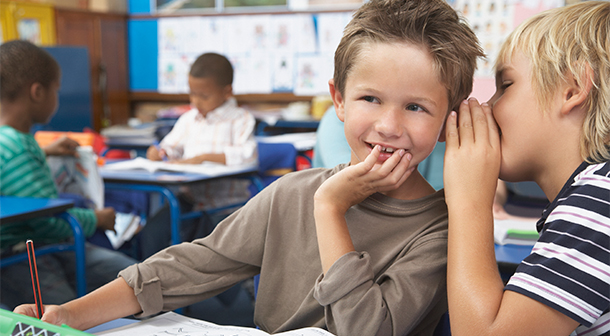
Examples of Peer Pressure Ages 7–10
In this stage, kids may start to care more about what their peers think of them and less about what their family or other authority figures think of them. At around age 10, popularity at school begins to be a factor, though this sometimes happens earlier. To try to be popular, children may begin to test the limits set by parents and teachers to impress their peers. Age 10 is also when children begin to develop crushes, which play a factor in peer pressure.
At this age, the effects of peer pressure could include:
- Misbehaving in class to make friends laugh.
- Testing the limits of safety to impress friends.
- Engaging in online behavior that goes against their parents' rules.
It's important to target and address these risky behaviors now, before kids enter middle school. The hope is to prevent these behaviors continuing in middle school, when peer pressure can have a much greater impact.
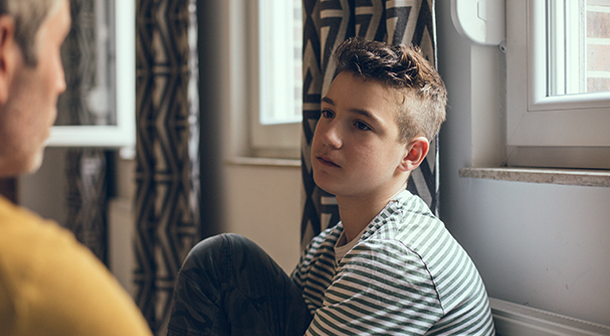
Examples of Peer Pressure at Age 11+
Speaking to pre-teens and teenagers about peer pressure is very important. This is the time when they're at the highest risk because they're searching for their own identity. Often, they find that identity by fitting in with others. At this stage, children's risk of peer pressure can become more dangerous as they potentially become exposed to drugs, alcohol, sexual encounters, and reckless driving. Many of these risks become greater with age.
In pre-teens and teens, peer-pressure-related behavior often includes:
- Trying dangerous or illegal things such as drugs, alcohol, smoking, or vaping.
- Skipping class or other required school events.
- Staying out past curfew.
- Breaking driving laws, such as texting and driving, speeding, drinking and driving, and driving with too many people in the car.
- Other reckless behavior.
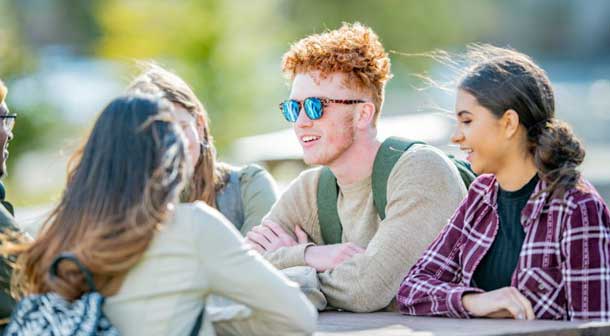
Talking to Your Kids about Peer Pressure
When talking with your child about peer pressure, it's important to use age-appropriate terms - to speak his language. Let him know that just because a friend is doing something doesn't mean it's okay for him to do it.
For little ones, you should start correcting them when you notice they're following their peers in a way that could be dangerous or don't align with your family rules. This can help boost confidence in their ability to tell right from wrong. You should also talk to them about the natural consequences of following a friend rather than following the lead of adults. For example, they know not to walk into the street without an adult, even if they see a friend doing it, because they could get hurt. Doing this will help your child develop the ability to say no in the face of peer pressure at an early age.
For children age 7-10, you can be more realistic about consequences that may result from following their peers. Help them understand that bad choices now may lead to more dangerous activities when they're older. Try not to scare them or use exaggerated examples, but it's okay to be more open with them as they get older. Focusing on natural consequences will allow your child to feel supported and more confident in coming to you when he faces greater peer pressures. It's important to address small challenges so that you have a foundation when bigger ones arise.
Pre-teens and teens will likely not be as open in sharing the challenges they are facing with peers, so it's important to pay attention to their moods, behaviors, and friends. Do the best you can to keep the lines of communication open so they'll be more likely to come to you during challenging times. Again, starting early will help. Remind them that everyone feels peer pressure, but there are consequences for all their actions and some can be pretty extreme.
When we have these conversations with our kids early and consistently, we help them navigate peer pressure before they have to navigate it on their own. By starting while your kids are young, you can guide them in identifying and acknowledging situations they should avoid. It's also a chance to help them think through their alternatives. Remember that your words and actions matter, so being a positive role model and praising your kids for good decisions are huge steps in the right direction in addressing peer pressure.
Need parenting help now?
The Texas Parent Helpline is available 24/7.
- Call 833-680-0611
- Chat with us
- Text 833-680-0611
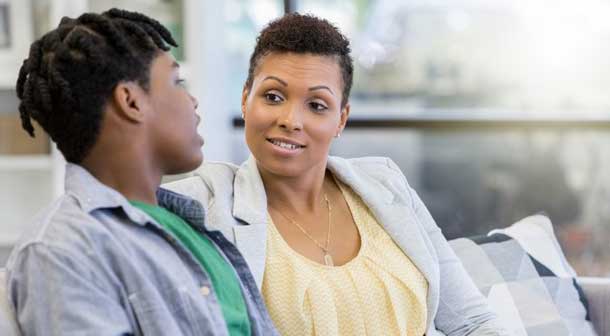
Helping Kids Manage Peer Pressure
Self-confidence and self-reliance are the greatest strengths we can instill in our kids to help them combat peer pressure. Kids with a strong sense of self-confidence are more likely to lean into their own needs rather than following their peers. So how can we boost confidence and self-esteem in our kids? One of the first things to consider is that the way we view our children is how they learn to view themselves. To an extent, the voice we use with our children becomes their own inner voice. If we usually look at our children with annoyance and frustration, this is how they'll look at themselves. No parent wants her (or his) children to look at themselves with low self-esteem.
If we view our children with joy and admiration, this is how they will learn to view themselves. If we speak to them with kindness and compassion, this is the inner voice they will have for themselves. The best way to build confident kids and improve self-esteem is to show your kids how much you believe in them. Communicating our trust in them helps them to better trust themselves and build self-confidence.
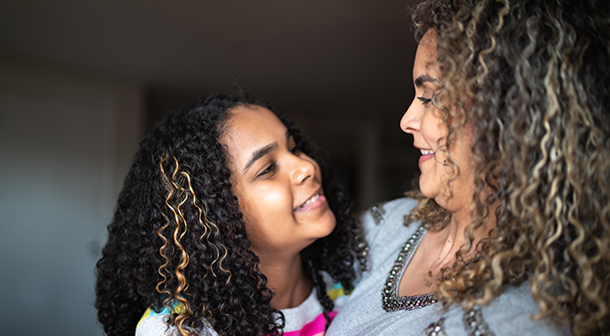
Why it's so Important
As parents, we can't be with our children all the time. This makes the work we do at home so important. We are laying the foundation for their safety, independence, inner strength, and self-esteem. While peer pressure for young children may not have the greater risks that it does for teens, addressing it when your kids are young means you're laying the groundwork for them to handle the greater challenges to come. The inner voice we instill in our kids becomes the outer voice they relay to the world when they say “no.” The strength we instill in our children becomes the legs they stand on. Helping children to understand peer pressure from a young age, guiding them through those tough situations, building their self-confidence, and helping them form boundaries will all be beneficial as they encounter more high-stakes situations.



